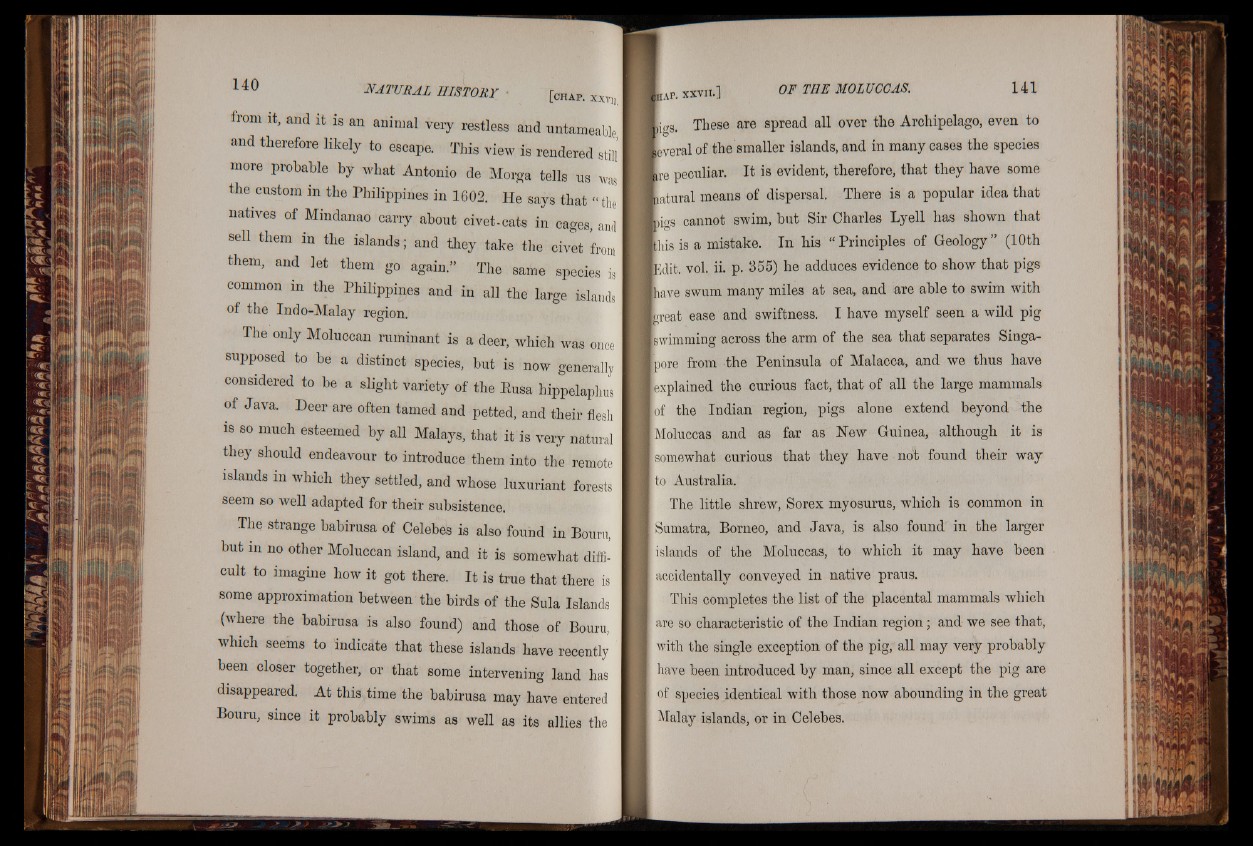
from it, and it is an animal very restless and untameable
and therefore likely to escape. This view is rendered still
more probable by what Antonio de Morga tells us w j
the custom in the Philippines in 1602. He says that “ the
natives of Mindanao carry about civet-cats in cages, and
sell them in the islands; and they take the civet from
them, and let them go again.” The same species iJ
common in the Philippines and in all the large islands
of the Indo-Malay region.
The only Moluccan ruminant is a deer, which was once
supposed to he a distinct species, hut is now generally
considered to he a slight variety of the Eusa hippelaphus
of Java. Deer are often tamed and petted, and their flesh
is so much esteemed by all Malays, that it is very natural
they should endeavour to introduce them into the remote
islands in which they settled, and whose luxuriant forests
seem so well adapted for their subsistence.
The strange babirusa of Celebes is also found in Bourn,
but in no other Moluccan island, and it is somewhat difficult
to imagine how it got there. I t is true that there is
some approximation between the birds of the Sula Islands
(where the babirusa is also found) and those of Bouru,
which seems to indicate that these islands have recently
been closer together, or that some intervening land has
disappeared. At this time the babirusa may have entered
Bouru, since it probably swims as well as its allies the
■igs. These are spread all over the Archipelago, even to {feveral of the smaller islands, and in many cases the species
[re peculiar. It is evident, therefore, that they have some
iatural means of dispersal. There is a popular idea that
Rigs cannot swim, but Sir Charles Lyell has shown that
lliis is a mistake. In his “ Principles of Geology” (10th
Edit. vol. ii. p. 355) he adduces evidence to show that pigs
[have swum many miles at sea, and are able to swim with
breat ease and swiftness. I have myself seen a wild pig
swimming across the arm of the sea that separates Singapore
from the Peninsula of Malacca, and we thus have
(explained the curious fact, that of all the large mammals
of the Indian region, pigs alone extend beyond the
Moluccas and as far as Hew Guinea, although it is
[somewhat curious that they have not found their way
to Australia.
The little shrew, Sorex myosurus, which is common in
Sumatra, Borneo, and Java, is also found in the larger
islands of the Moluccas, to which it may have been
I accidentally conveyed in native praus.
This completes the list of the placental mammals which
are so characteristic of the Indian region; and we see that,
with the single exception of the pig, all may very probably
have been introduced by man, since all except the pig are
[ of species identical with those now abounding in the great
Malay islands, or in Celebes.